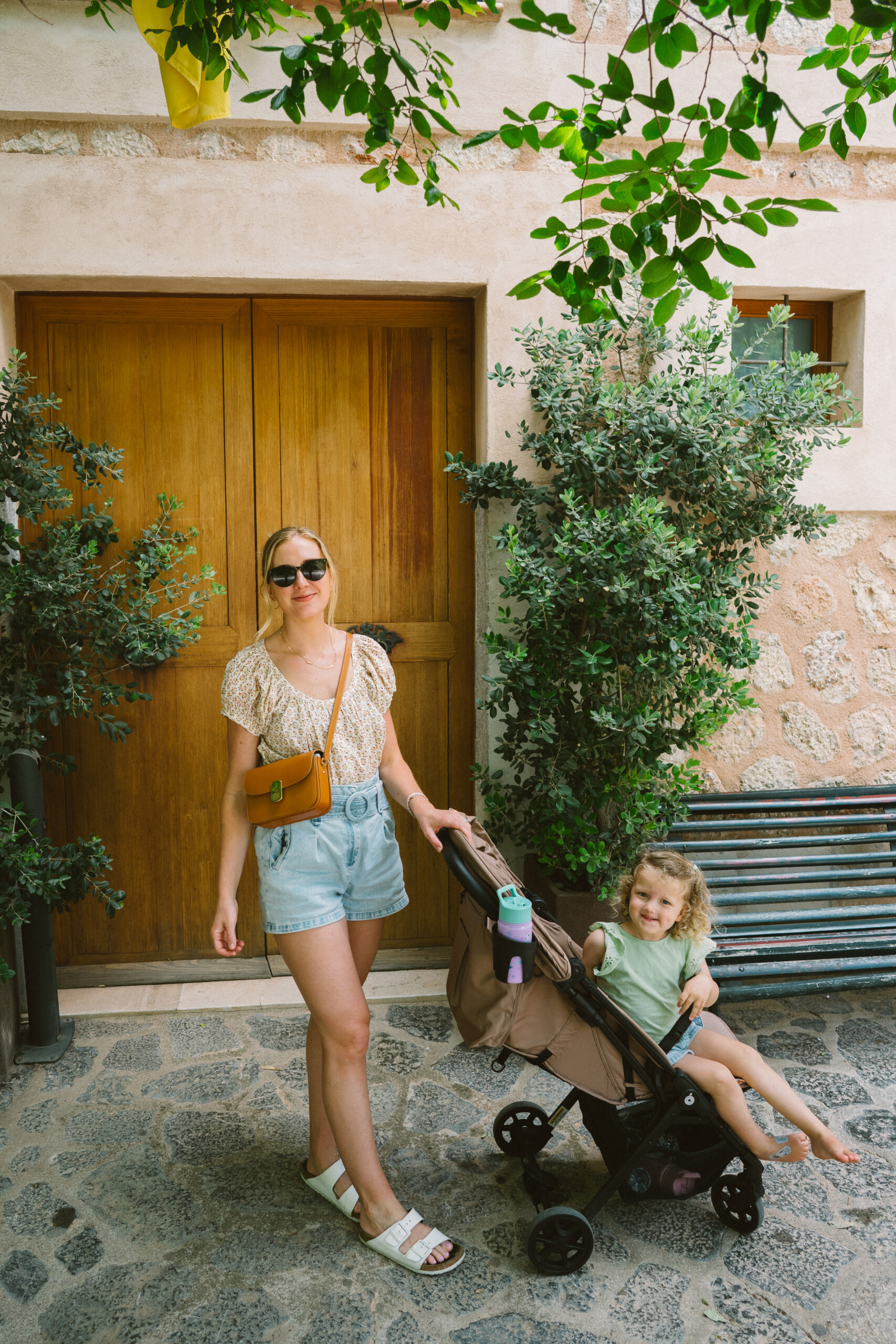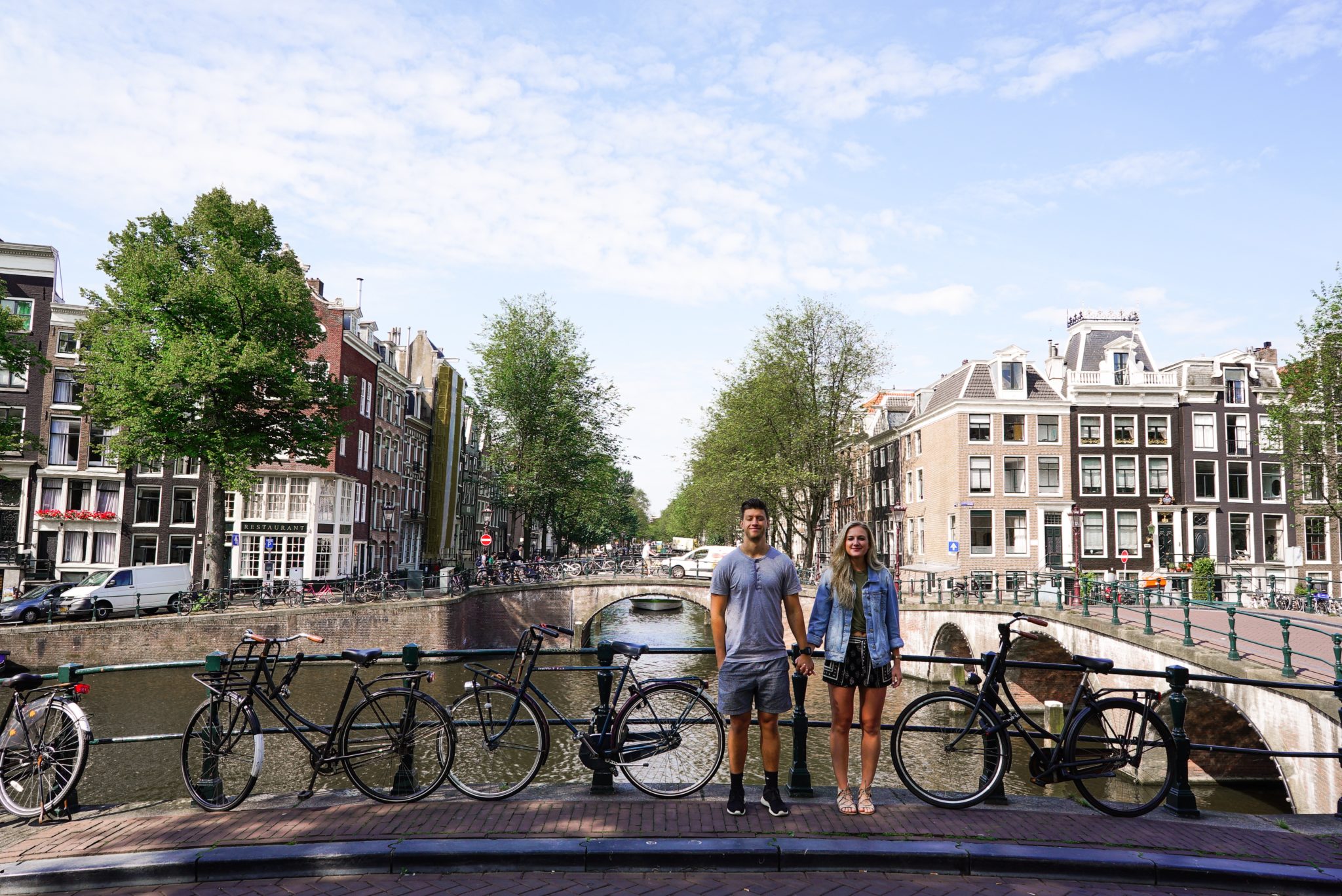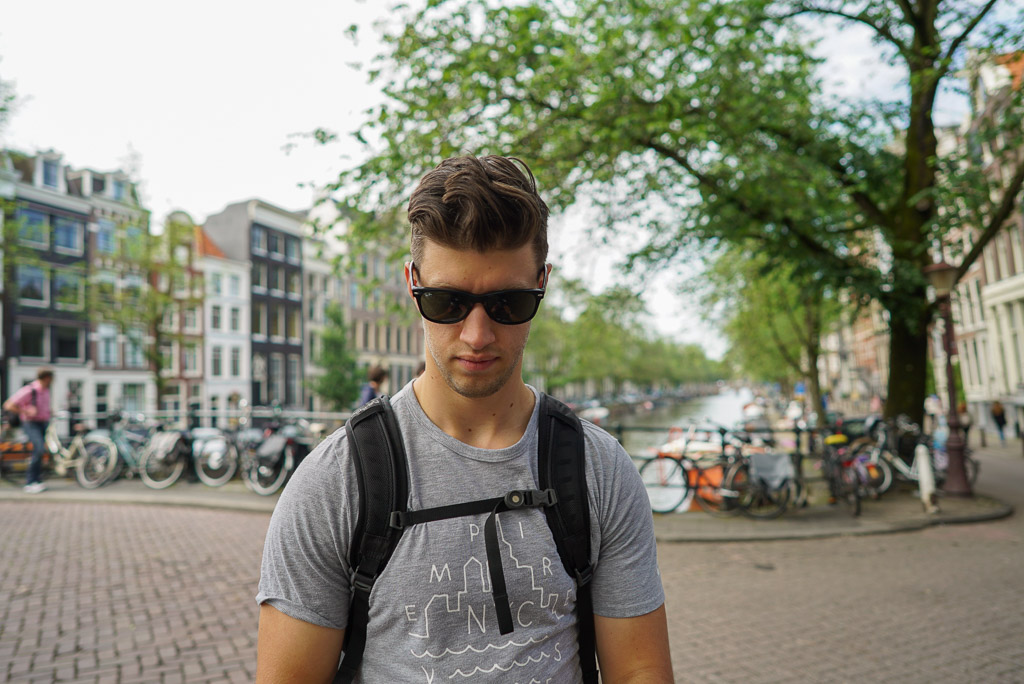The ever-giving Facebook memory feature reminded me this week of my very first trip to Europe, a three-month stint in Spain during the first quarter of my senior year of college.
I had somehow finagled my way into a situation wherein my participation in a study abroad program in Spain would allow me to graduate a quarter earlier than most of my classmates. With the program costing far less than what that last quarter at Cal Poly would have, my parents scratched their heads, shrugged, and told me to start saving for my flight.
I spent my junior year in a messy-bunned frenzy, running between class, my glamorous job at Einstein’s Bagels, and the on-campus sophomore apartments where I was an RA. The following summer, I knocked on doors and sold alarm systems in Philadelphia and Baltimore. Clipboard in hand and bright orange polo sticking to my sweaty back, nothing could stop me.
Come September of my senior year, I was proud of my little bank account and ready to eat some pasta.
My friend Makena and I were fortunate enough to spend a week lugging our suitcases around Italy before our program orientation in Madrid. I’ll never forget the butterflies we both felt as our plane touched down at Fiumicino.
I’ll also never forget the memories we made that week–traipsing through Rome with gelato in hand, hiking between the adorable towns of Cinque Terre, and drinking cheap red wine straight from the bottle on the steps in front of the Duomo.
(Here I am hiking the paths in Cinque Terre!)
But that’s enough nostalgia for one day. I’ll probably do a “Why Every College-Aged Young Adult Should Live Abroad” post at some point.
Today, I want to cover a few things that I wish someone had told me (or that I had done more research on) before my first trip to Europe.
These are not hard and fast rules by any means–just some things we’ve noticed over the years that would have been nice to know before that first trip. And fair warning, this post is mostly geared towards my fellow high-maintenance Americans.
1. Service and atmosphere at restaurants
The biggest difference between dining in Europe and in the U.S. is that the atmosphere is much more relaxed. This is especially true in Southern Europe, and it isn’t because European servers are lazy or disrespectful. They move slowly based on the expectation that dinner guests want to actually enjoy their meal. I know, this concept is tough for Americans to get used to–especially impatient type A’s (my husband).
I beg of you: do not complain if your server leaves you hanging at the end of the meal. The last thing they want to rush you out of the restaurant, and they probably assume that you want to relax and enjoy the company you are with. Embrace it.
2. Water at restaurants
In the U.S., where “more is more,” we can expect a glass of iced water at our seat before we even have a chance to order a basket of truffle fries.
You’ll have to request water in European restaurants. Your server will ask “still or sparkling?” and you should expect to pay for it (unless you specifically ask for tap–usually fine to drink anywhere but Eastern Europe).
3. Tipping
Tipping in Europe is much more casual than in the U.S. Don’t stress it too much. At restaurants, a service charge is either added to your bill already (Mediterranean countries) or taken into account in the cost of your meal (Northern and Eastern Europe).
Give 5-10% or even just a euro or two for each member of your party. Giving 15-20% is totally unnecessary and a dead giveaway for an American who didn’t do their homework. It’s best to give a tip in cash form and directly hand it to the server themselves.
Riding in a taxi and stressed about what to tip? Simply round up to the nearest dollar as a gesture of gratitude to your driver.
4. Hotel Rooms
Hotel standards in Europe are very different than in the U.S. Not wrong, just different.
First of all, most rooms, even at 4 or 5 star hotels are TINY. Like, trip-over-your-messy-suitcase-in-the-dead-of-night tiny. And this means that the bathrooms are microscopic. Most of these buildings are hundreds of years old, so it makes sense.
You can expect that pretty much everything in your hotel will be small: the room, the bathroom, the towels, and you might even have to take two trips up the miniscule elevator to get your luggage up to your room. But don’t fret: what European hotels lack in size they make up for in charm.
Another disconnect between European and American standards is that 90% of the time, a “double bed” booking will land you in a room with two twin beds pushed against each other. The first time Tyler and I encountered this lovely quirk was on our honeymoon.
5. Baggage restrictions
One of the best things about traveling in Europe is how cheap the flights between countries are. Who wouldn’t want to fly from Madrid to Dublin for €16??
You can score amazing deals on flights on budget airlines like Ryanair, Vueling, and Easyjet. But be warned: where they get you is in the baggage fees, most times listed in very fine print.
With Ryanair, for example, checking a bag under 20kg (44lbs) costs €25. You can bring one carry-on and one personal item aboard the plane with you. However, the carry-on bag cannot be bigger than 55cm x 40cm x 20cm in size or weight more than 10kg (22 lbs). If your bag exceeds either limit, they will charge you €50.
6. Flying with liquids
The new European regulations take flying with liquids in your carry-on to a whole new level. Not only do containers need to be less than 3.4 ounces, but the entirety of your liquid toiletry collection cannot exceed the amount that can fit into a litre-sized plastic bag.
I can’t tell you how many times I’ve had to sheepishly and feverishly prioritize my Sephora travel size ESSENTIALS and stuff the most important into a plastic bag while the security team (and everyone in line behind me) stares at me impatiently.
This is a lesson that I’m very tired of learning the hard way. Maybe one day I’ll be able to write a “Simple Travel Beauty Routine” post, but I’m just not quite there yet.
7. Restrooms
With a bladder the size of a pinto bean, I have, by necessity, a sort of “sixth sense” when it comes to locating bathrooms quickly. Europe always challenges that skill of mine, as restrooms across the pond seem to be a bit more elusive than in the U.S.
You’ll have to pay to use most public toilets, and those are few and far between. Though it’s never not worth it to pay for a toilet (at least for me), it is a little annoying and something to be aware of.
My advice is to ALWAYS go before you leave the hotel, at any restaurant you eat at, and most certainly at every museum you visit (those are always the cleanest).
8. Currency
This point is pretty simple: do your research on currency. A lot of European countries conveniently use the euro. There are, however, several that do not (e.g. Switzerland, Denmark, and the UK).
Check out this helpful guide before your trip so you know what to expect.
9. Be kind and normal
In case you’ve been living under a rock, you might know that we Americans do not hold the best reputation abroad right now. Let’s face it: we have a collective tendency to come off needy, loud, and entitled.
I’ll never forget watching an American woman yell at barista at the Vatican for not serving her “A PLAIN AMERICAN COFFEE.” I wanted to tap on her shoulder and say, “but we aren’t in America???” So embarrassing.
Let’s do our best to treat everyone we meet with kindness and respect, shall we? You might be caught off guard by something that is different than how we do things in the U.S. If that’s the case, take a breath and remind yourself that this is why we travel–to see and experience a culture different from our own. And then brush it off.
My best advice to any new traveler headed to Europe or elsewhere (rather, my best advice to anyone, anytime) is to just be normal. Go with the flow, even when things don’t go your way.
Give yourself a pat on the back for adventuring outside of your comfort zone. Enjoy every second of your time in Europe, and have a glass of prosecco for us!
Pin this Post:
It’s a pre-weekend pick me up: just a little note with links to the latest blog posts, what I’m reading lately, and products I’m obsessed with. Think of it as a friend dropping off a surprise latte in the morning--you know?











